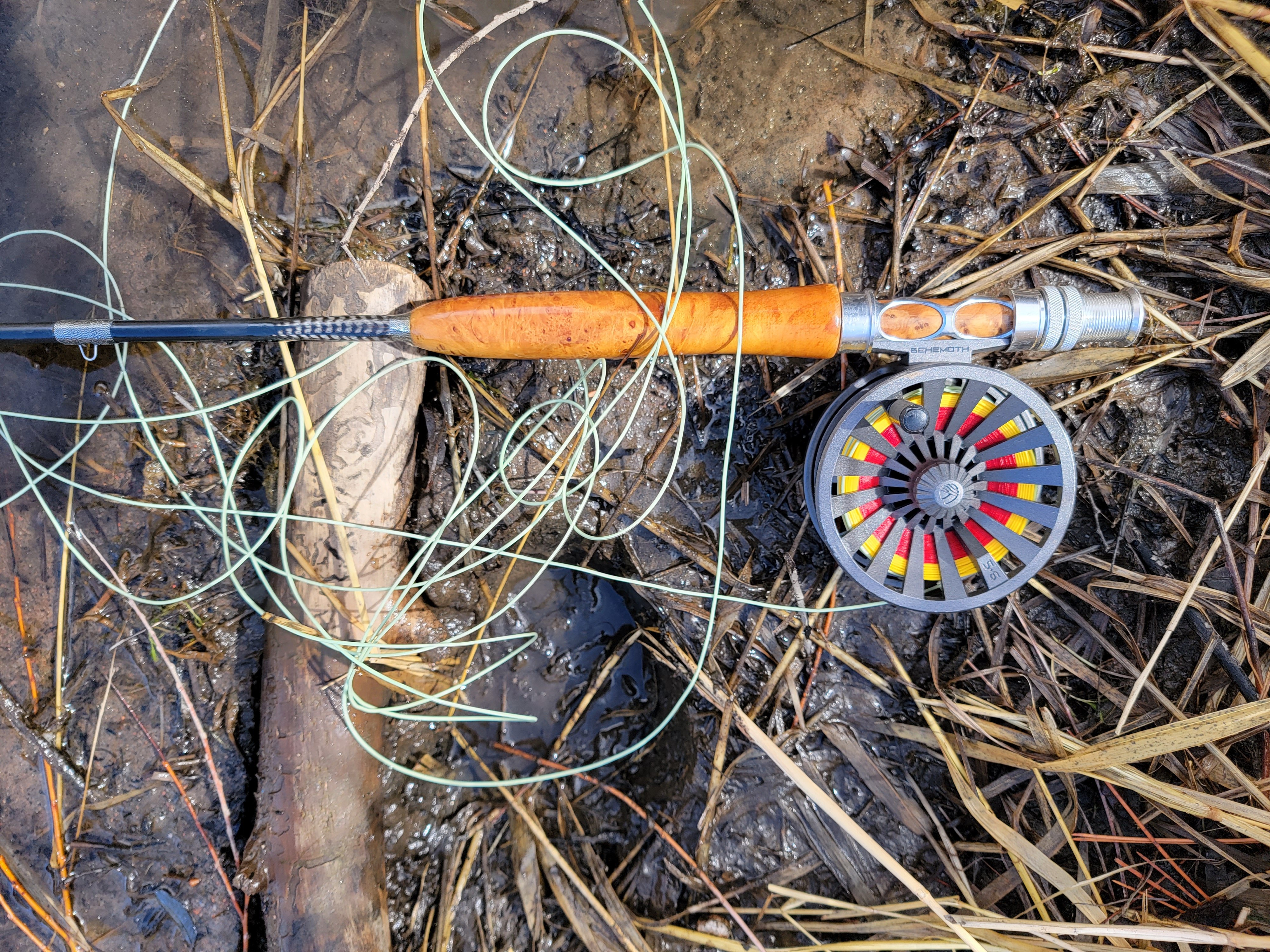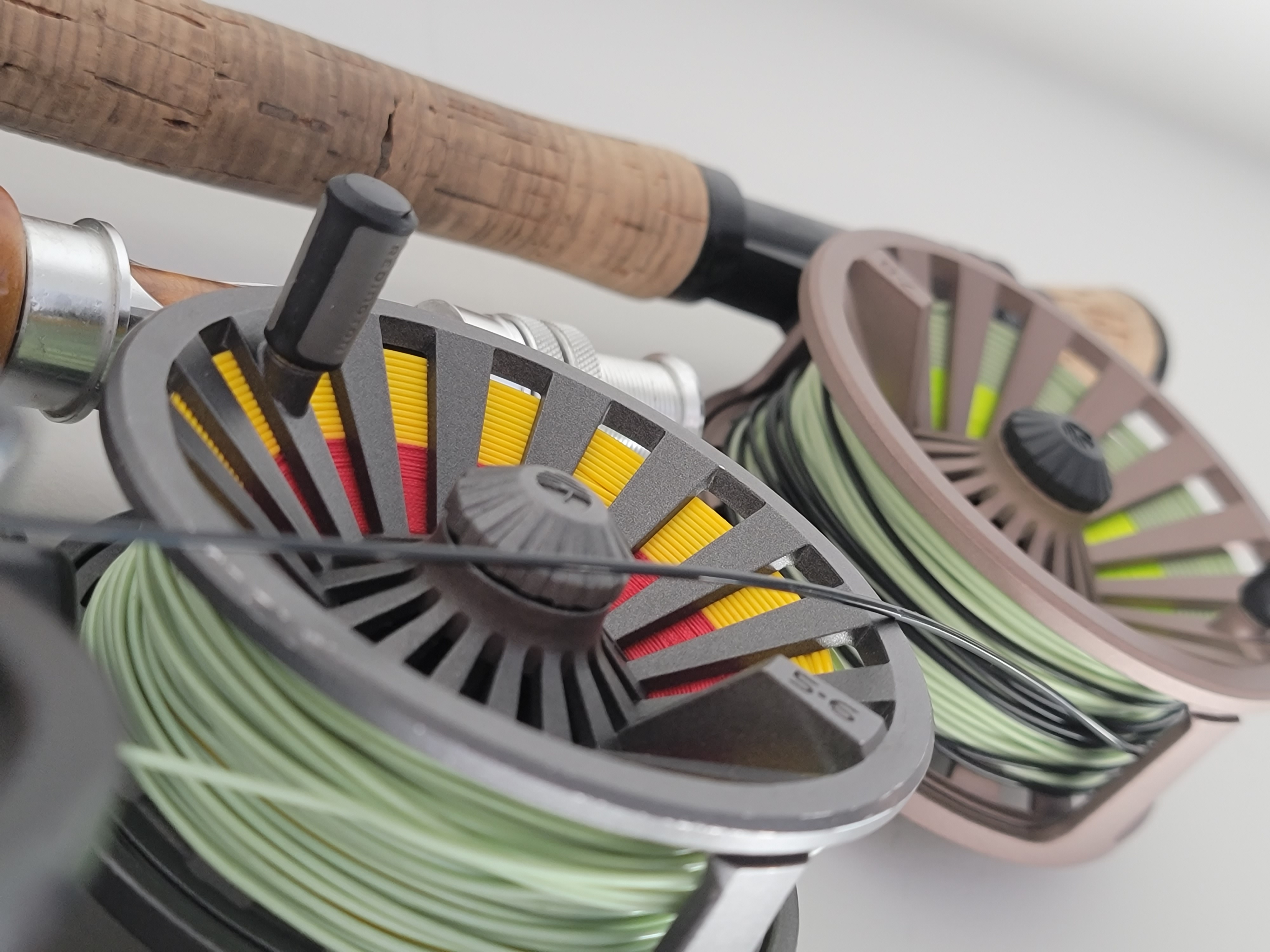Choosing the right fly fishing reel size is one of the most common gear questions anglers have, and one of the easiest to overthink. Reel sizing affects balance, line capacity, drag performance, and how enjoyable your setup feels on the water.
The good news is that fly reel sizing is far simpler than it seems once you understand a few basic principles. This guide breaks it down clearly, without brand bias or unnecessary technical jargon.
Jump to
Reel Size Chart
Size to Weight
Backing
Common Mistakes
How Do You Choose the Right Fly Reel Size?
Short Answer
Choose a fly reel that matches your rod’s line weight. In most cases, a reel labeled for the same weight as your rod (for example, a 5 weight reel for a 5 weight rod) is the correct choice. Adjust up or down only if you need additional backing capacity, stronger drag, or better balance.
Fly Reel Size Chart (Quick Reference)
| Rod Weight | Typical Reel Size | Common Use |
|---|---|---|
| 2–3 wt | 2–3 reel | Small streams, light trout |
| 4 wt | 4–5 reel | Creeks, light dry fly fishing |
| 5 wt | 5–6 reel | All-around trout fishing |
| 6 wt | 6–7 reel | Larger rivers, streamers |
| 7 wt | 7–8 reel | Bass, light saltwater |
| 8 wt | 8–9 reel | Steelhead, salmon |
| 9–10 wt | 9–10 reel | Saltwater, large species |
This alignment works for the vast majority of fly fishing situations.
Why Fly Reel Size Matters
A properly sized reel does more than just hold line.
Reel size affects:
- Rod balance and fatigue
- Backing capacity
- Drag strength
- Line retrieval rate
An undersized reel can feel tip-heavy and lack backing. An oversized reel adds unnecessary weight and bulk.
Matching Reel Size to Rod Weight (The Rule That Works)
Most reel manufacturers size reels to cover a range of line weights. A reel labeled 5–6 weight is designed to pair with 5 or 6 weight rods.
General rule:
Match the middle of the reel’s size range to your rod weight.
Examples:
- 5 weight rod → 5–6 reel
- 6 weight rod → 6–7 reel
This ensures proper balance and enough line capacity.
When Should You Size Up a Fly Reel?
Sizing up can make sense in a few situations.
Size up if you:
- Fish larger rivers with long runs
- Target stronger fish
- Need more backing capacity
- Want a slightly heavier reel to balance a longer rod
Example:
Using a 6–7 reel on a 5 weight rod when fishing big western rivers.
When Should You Size Down a Fly Reel?
Sizing down is less common, but sometimes appropriate.
Size down if you:
- Fish small streams or creeks
- Use short rods
- Prioritize lightweight setups
- Target smaller fish
Example:
Using a 4–5 reel on a short 4 weight creek rod.
Fly Reel Size and Backing Capacity
Backing capacity becomes more important as fish size increases.
For trout fishing:
- 50–100 yards of backing is usually sufficient
For larger species:
- More backing requires a larger spool
- Reel size matters more than line weight alone
If backing capacity is critical, err on the larger side.
Arbor Size vs Reel Size (Common Confusion)
Reel size and arbor size are not the same thing.
Large arbor reels:
- Retrieve line faster
- Reduce line memory
- Are common on modern reels
A large arbor reel may look bigger but still be correctly sized for your rod. Always rely on the manufacturer’s line weight rating, not appearance.
Choosing Reel Size Based on Species
Here is a practical species-based approach:
- Trout: Match rod weight directly
- Bass: Consider sizing up one reel size
- Steelhead/Salmon: Larger reel with stronger drag
- Saltwater species: Larger reel with sealed drag and backing capacity
Species strength and run length matter more than fish size alone.
Common Fly Reel Sizing Mistakes
Avoid these common errors:
- Buying a reel based only on looks
- Ignoring rod balance
- Oversizing for no practical reason
- Undersizing and lacking backing
- Confusing spool size with reel size
Keeping it simple usually leads to the right choice.
Final Thoughts
Choosing the right fly reel size does not need to be complicated. Match your reel to your rod’s line weight, consider your fishing environment and target species, and size up only when there is a clear reason to do so.
A balanced setup feels better, fishes better, and lets you focus on the water instead of your gear.
.png?width=300&height=100&name=Copy%20of%20Rise%20Beyond%20Logo%2012.31.24%20(300%20x%20100%20px).png)
.png)
.png?width=600&height=338&name=Untitled%20design%20(13).png)
.png?width=600&height=338&name=Untitled%20design%20(38).png)

-1.png?width=600&height=400&name=fly%20fishing%20in%20colorado%20(64)-1.png)

-1.png)
